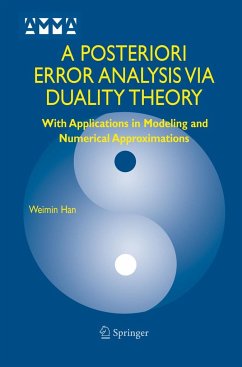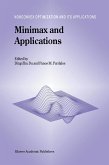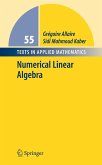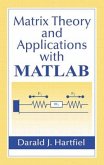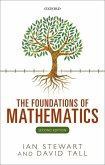This volume provides a posteriori error analysis for mathematical idealizations in modeling boundary value problems, especially those arising in mechanical applications, and for numerical approximations of numerous nonlinear variational problems. The author avoids giving the results in the most general, abstract form so that it is easier for the reader to understand more clearly the essential ideas involved. Many examples are included to show the usefulness of the derived error estimates.
This work provides a posteriori error analysis for mathematical idealizations in modeling boundary value problems, especially those arising in mechanical applications, and for numerical approximations of numerous nonlinear var- tional problems. An error estimate is called a posteriori if the computed solution is used in assessing its accuracy. A posteriori error estimation is central to m- suring, controlling and minimizing errors in modeling and numerical appr- imations. In this book, the main mathematical tool for the developments of a posteriori error estimates is the duality theory of convex analysis, documented in the well-known book by Ekeland and Temam ([49]). The duality theory has been found useful in mathematical programming, mechanics, numerical analysis, etc. The book is divided into six chapters. The first chapter reviews some basic notions and results from functional analysis, boundary value problems, elliptic variational inequalities, and finite element approximations. The most relevant part of the duality theory and convex analysis is briefly reviewed in Chapter 2.
Hinweis: Dieser Artikel kann nur an eine deutsche Lieferadresse ausgeliefert werden.
This work provides a posteriori error analysis for mathematical idealizations in modeling boundary value problems, especially those arising in mechanical applications, and for numerical approximations of numerous nonlinear var- tional problems. An error estimate is called a posteriori if the computed solution is used in assessing its accuracy. A posteriori error estimation is central to m- suring, controlling and minimizing errors in modeling and numerical appr- imations. In this book, the main mathematical tool for the developments of a posteriori error estimates is the duality theory of convex analysis, documented in the well-known book by Ekeland and Temam ([49]). The duality theory has been found useful in mathematical programming, mechanics, numerical analysis, etc. The book is divided into six chapters. The first chapter reviews some basic notions and results from functional analysis, boundary value problems, elliptic variational inequalities, and finite element approximations. The most relevant part of the duality theory and convex analysis is briefly reviewed in Chapter 2.
Hinweis: Dieser Artikel kann nur an eine deutsche Lieferadresse ausgeliefert werden.
From the reviews:
"The subject of this book is the a posterior error analysis for mathematical idealizations in applied boundary value problems (BVPs) ... . A very nice book, well structured and written, coupling mathematical theory and numerical results and tests for applied problems." (Viorel Arnautu, Zentralblatt MATH, Vol. 1081, 2006)
"I believe that this book is the first book to present a systematical study in applying the duality theory to deriving a posteriori error estimates for a variety of interesting problems. ... The book is very well written. ... this nice book is quite easy to follow. I believe that the book will be very useful for researchers and graduate students in applied and computational mathematics and engineering." (Wen Bin Liu, Mathematical Reviews, Issue 2005 k)
"The subject of this book is the a posterior error analysis for mathematical idealizations in applied boundary value problems (BVPs) ... . A very nice book, well structured and written, coupling mathematical theory and numerical results and tests for applied problems." (Viorel Arnautu, Zentralblatt MATH, Vol. 1081, 2006)
"I believe that this book is the first book to present a systematical study in applying the duality theory to deriving a posteriori error estimates for a variety of interesting problems. ... The book is very well written. ... this nice book is quite easy to follow. I believe that the book will be very useful for researchers and graduate students in applied and computational mathematics and engineering." (Wen Bin Liu, Mathematical Reviews, Issue 2005 k)
